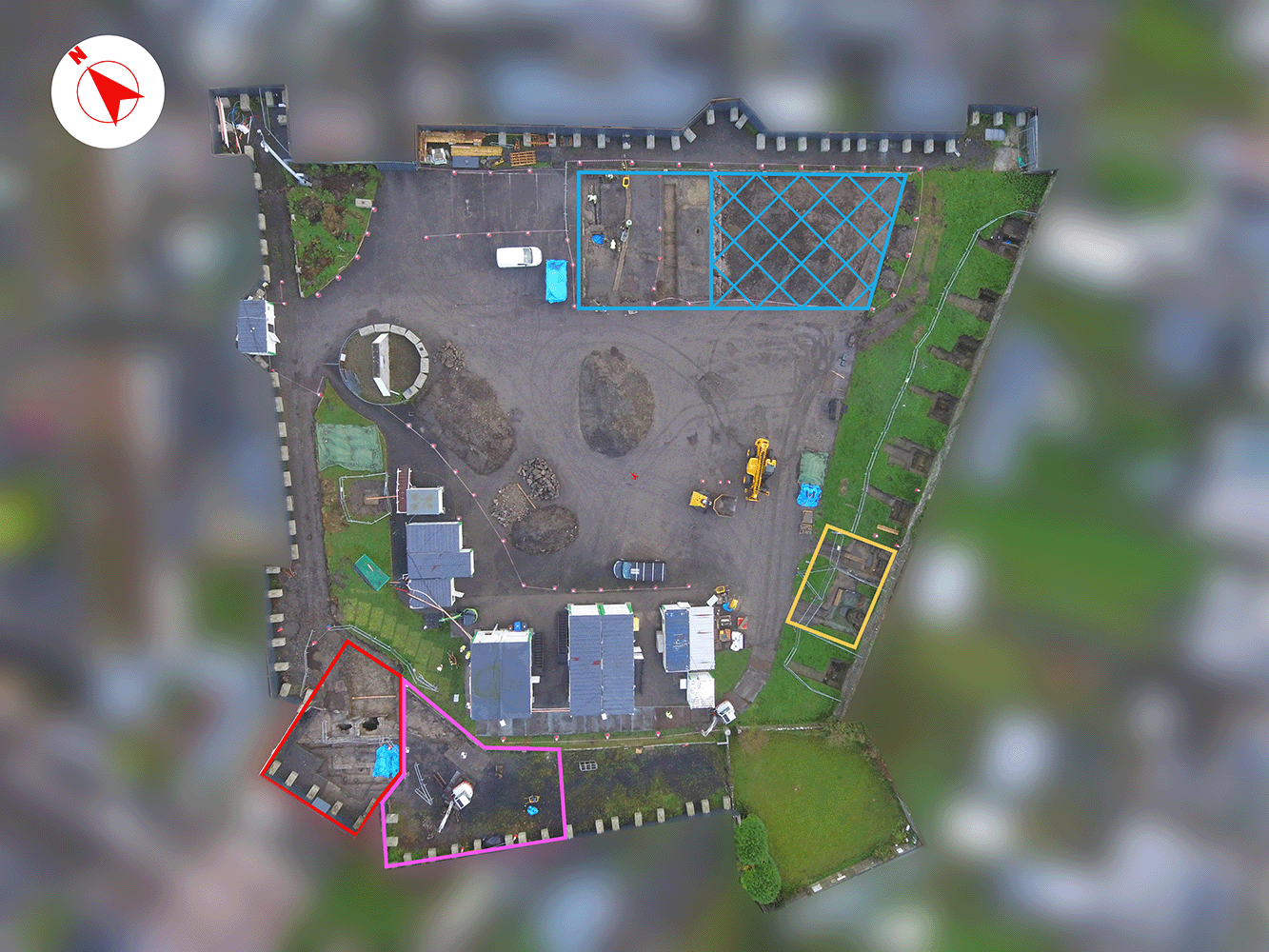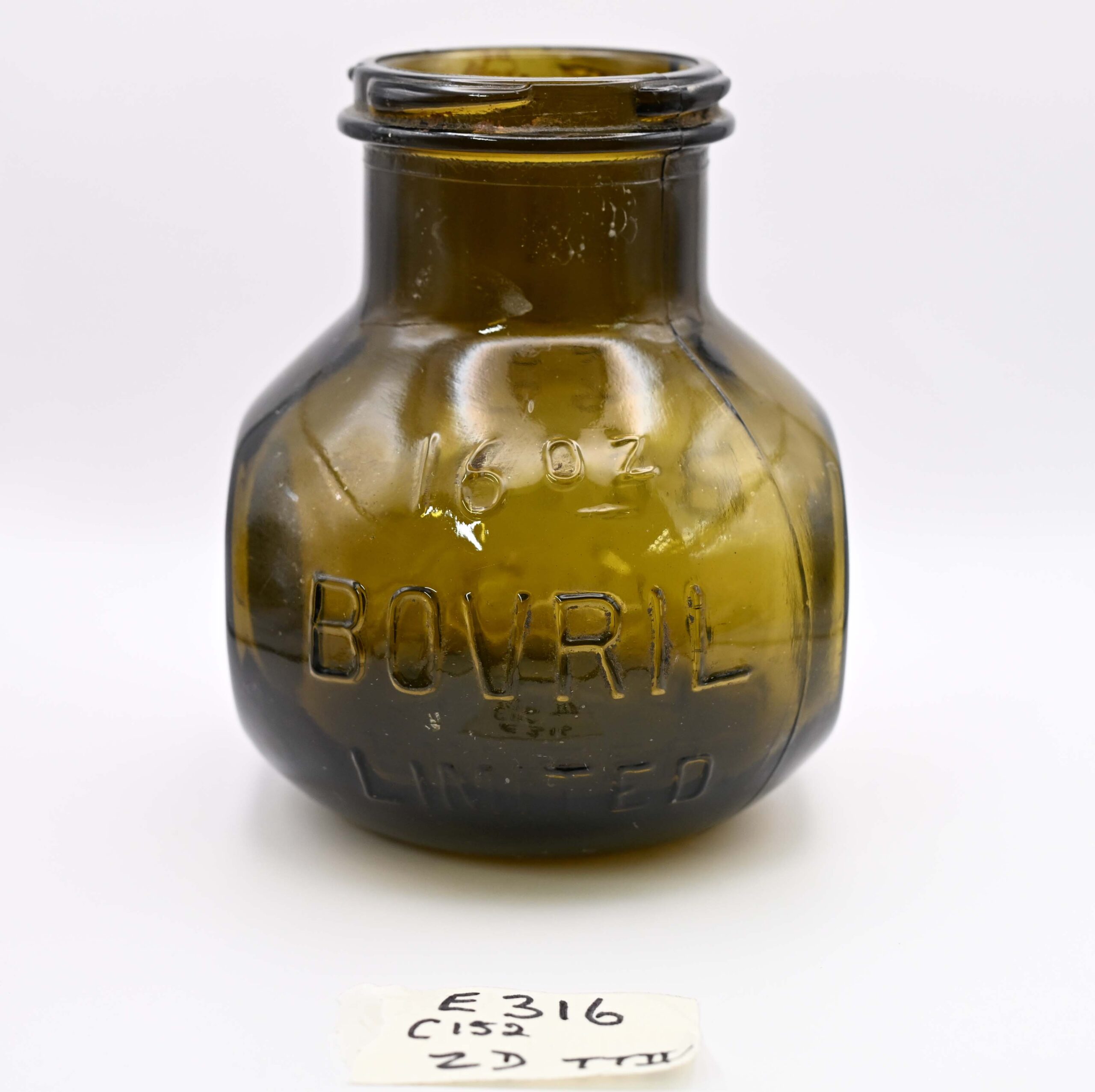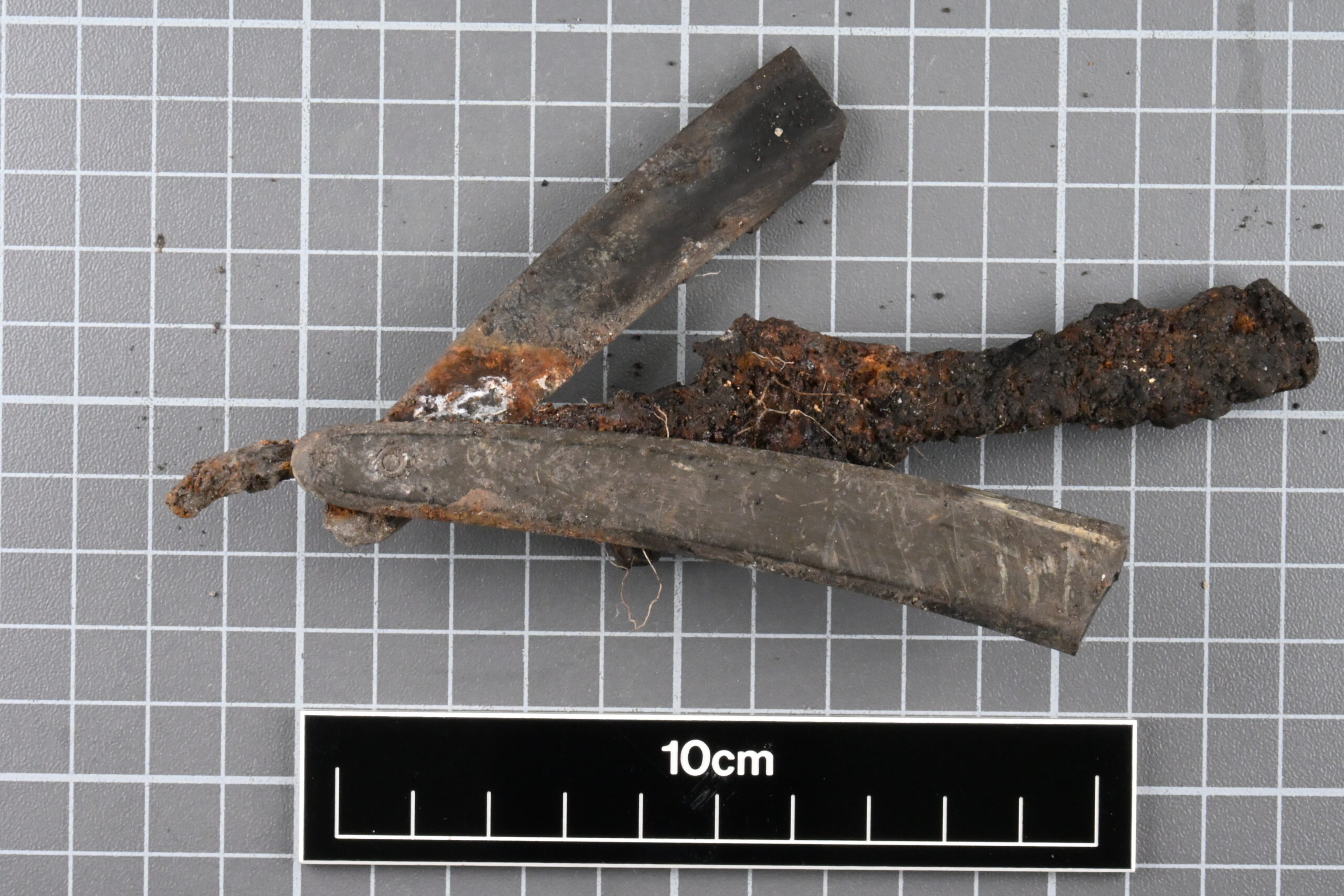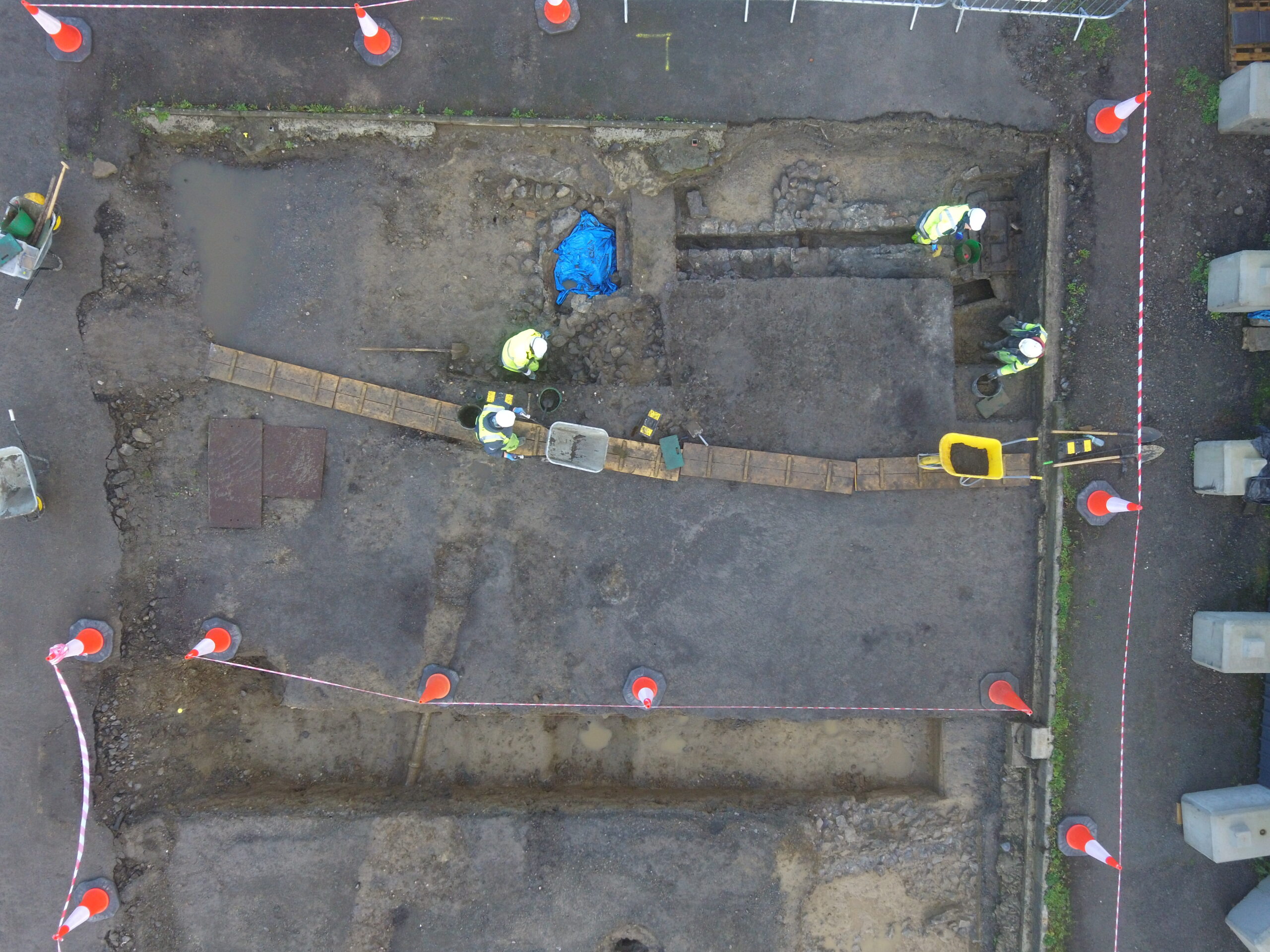Friday, 7th November 2025
Technical Update from the forensic excavation at the site of the former Mother and Baby Institution in Tuam, Co. Galway
Reporting Period: 25th September to 29th October 2025
Forensic excavation of the site of the former Mother and Baby Institution in Tuam continues. In this reporting period, excavation has focused on four locations outlined in colour in the photo below:
Blue outline: Excavation continued in the site of the former workhouse yard. The portion hatched in blue has now been forensically resolved, which means that there is no further evidence of human activity in this area and no need to continue excavation there.
Orange outline: Hand excavation continued.
Red outline: Hand excavation continued where the vaulted structure had been exposed.
Pink outline: Machine excavation began.

The excavation continues to uncover, recover and identify materials from four main eras (see below) in the site’s history, as well as objects from earlier ancient and unrelated dates:
- Post-institutional: 1961 onwards.
- Institutional (the era of the Mother and Baby Institution): 1925 to 1961.
- Military: 1918 to 1925.
- Workhouse: 1841 to 1918.
Notable evidence recovered during the reporting period 25th September to 29th October 2025, per area:
Structures
Blue outline: In the former yard area, the base of a pump connected to a subterranean stone built shaft and a complex of drains was uncovered. A series of historic repairs and adjustments to this system is in evidence (see photos below). The area hatched in blue has been completely resolved.
Red outline: Excavations continued at the location where workhouse plans indicated underground vaulted structures. To access these underground vaulted structures, it is necessary for safety reasons to excavate the surrounding ground (pink outline) first. Please note that this is not the multi-chambered tank in the memorial garden, which was located in 2016/17. The memorial garden will be excavated later in this process.
Material evidence
The excavations continue to recover numerous objects from the institutional and other eras. Institutional and historic era objects recovered during this reporting period included glass, pottery and metal objects. These included receptacles such as a glass Bovril jar and personal items such as a razor (see photos below).
Human remains
Blue outline: No human remains have been recovered.
Orange outline: In the previous technical update ODAIT reported that five sets of historic, skeletal human remains, consistent with the Workhouse era (1841 to 1918) of this site, were recovered from this area. During the current reporting period a further two sets of remains were recovered from this area bringing the total to seven sets of historic, skeletal human remains consistent with the Workhouse era. In accordance with agreed provisions, ODAIT is cooperating with the National Museum of Ireland, the authority with responsibility for historic human remains, which are outside ODAIT’s mandate.
Red outline: ODAIT forensic experts also confirmed that seven sets of human remains were recovered from this area, in a location adjacent to the underground vaulted structures (see blue tarpaulin in the red outline area). Initial assessment indicates that these skeletal remains belong to infants and a full analysis will be carried out to estimate age at death.
As it is currently undetermined which era these human remains are from, ODAIT cannot say at this time whether they are from the Workhouse era (1841 to 1918), the military era (1918 to 1925) or the Mother and Baby Institution era (1925 to 1961). Radiocarbon dating and other analysis is being carried out to aid in determining their era of origin. Analysis to determine their era of origin is expected to take at least three months to complete and the results will be published in a technical update once received.
Pink outline: No human remains have been recovered.
Animal bone
We continue to retrieve large amounts of animal bone, likely from the institution, military and workhouse kitchens.
All evidence recovered is being photographed, catalogued and retained by ODAIT in a dignified and respectful manner consistent with international standards and best practice.
The excavation continues.
Update on the Identification Programme
The Director is now proceeding with the Identification Programme.
Accordingly, ODAIT will in the coming weeks contact those who, since May 2023, expressed an interest in providing a DNA sample. ODAIT will explain the Identification Programme, the Application Process and Determination of Eligibility and will support each applicant through the process
Anyone who believes they are related to someone buried at the Tuam site who has not yet contacted ODAIT is invited to do so. They will be assisted through the Application Process and Determination of Eligibility, which may take a number of weeks. Once determined eligible in accordance with the Act, a DNA sample will then be taken.
To understand the ID Programme and its next steps, please find more information at https://odait.ie/what-we-do/odait-id-programme/
The Identification Programme is proceeding in accordance with s.46(6) of the Institutional Burials Act 2022.
About the ODAIT Forensic Excavation
Excavation at the site of the former Tuam Mother and Baby Institution is being conducted by the Office of the Director of Authorised Intervention, Tuam under the Institutional Burials Act 2022.
In its day-to-day work, the ODAIT Forensic Excavation Team on site is led by the site co-ordinator. The team includes forensic archaeologists, osteoarchaeologists and forensic anthropologists, as well as a forensic evidence manager and a forensic photographer. They are supported by a main contractor who has supplied a team of construction professionals including skilled machine operators.
Forensic excavation commenced on 14th July 2025. This report covers weeks 12 to 16 of the forensic excavation works on site, covering progress up until close of business (COB) on 29th October 2025.
ODAIT will provide updates first to families and survivors and to the media and wider public on a monthly or bi-monthly basis.
Photos





